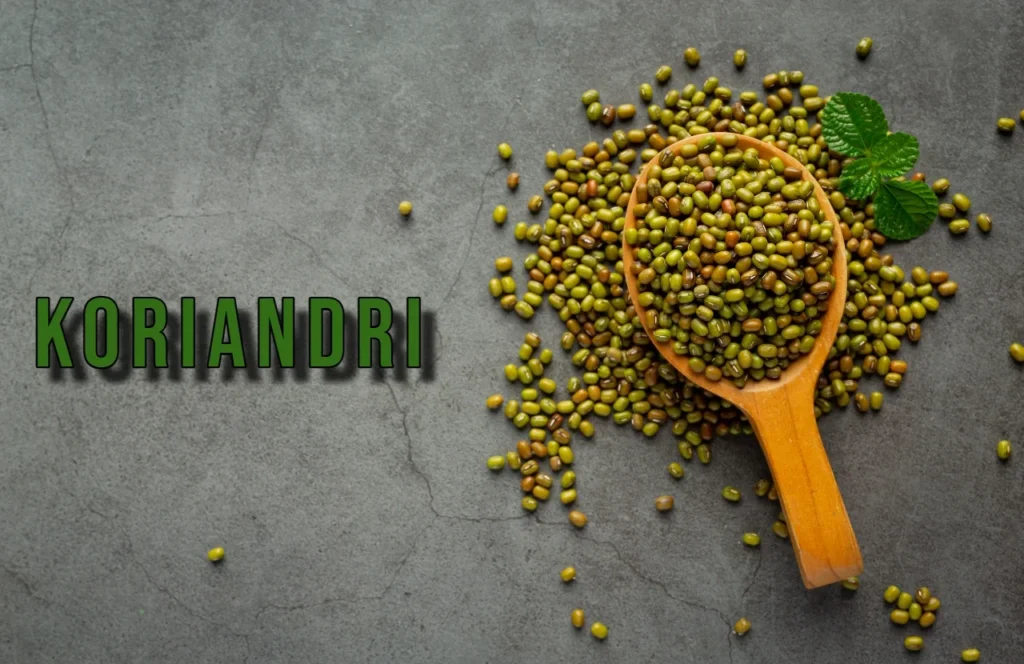Koriandri, commonly known as coriander or cilantro, is a culinary gem that has charmed taste buds for centuries. With its distinctive flavor profile and vibrant green leaves, this herb adds depth to dishes across various cuisines. Whether you’re sprinkling fresh leaves over tacos or infusing sauces with its earthy seeds, koriandri elevates your meals in remarkable ways. It’s not just about enhancing flavors; the benefits of koriandri extend far beyond the plate. Dive into the world of this versatile herb and discover how it can transform your cooking while boosting your health along the way.
History and Origin of Koriandri
Koriandri, often known as coriander, has a rich history that dates back thousands of years. Its origins trace back to regions in the Mediterranean and parts of Asia. Ancient Egyptians used it not only as a culinary herb but also for its medicinal properties.
In India, koriandri gained prominence around 5000 BCE. It is mentioned in various ancient texts, highlighting its significance in traditional cuisine and herbal medicine.
The spice found its way to Europe through trade routes during the Roman Empire. By the Middle Ages, it became popular across European kitchens.
As explorers ventured into new territories, koriandri traveled with them. Today, this versatile herb graces numerous dishes worldwide—from Indian curries to Mexican salsas—showcasing its enduring appeal throughout history.
Nutritional Value of Koriandri
Koriandri, also known as coriander or cilantro, packs a nutritional punch that can enhance your overall health. This aromatic herb is low in calories but rich in essential nutrients.
A mere tablespoon of fresh koriandri leaves contains significant amounts of vitamin K, vital for bone health and proper blood clotting. Additionally, it provides small but beneficial doses of vitamins A and C, both crucial for immune function.
The herb is also a good source of dietary fiber. Fiber aids digestion and helps maintain stable blood sugar levels. Moreover, koriandri boasts antioxidants that combat oxidative stress within the body.
Minerals like potassium and magnesium are present too. These minerals contribute to heart health by regulating blood pressure and supporting muscle function. Incorporating koriandri into your meals not only adds flavor but enriches your diet with these valuable nutrients.
Health Benefits of Koriandri
Koriandri, commonly known as coriander, is more than just a flavorful herb. Its health benefits are impressive and worth exploring.
Rich in antioxidants, koriandri helps combat oxidative stress in the body. This can lead to reduced inflammation and better overall health.
Additionally, it may aid digestion by promoting healthy gut bacteria. A teaspoon of fresh leaves can help soothe an upset stomach or assist with bloating.
Koriandri also boasts antimicrobial properties that can fight harmful bacteria and fungi. This makes it a great addition to meals for both taste and wellness.
Furthermore, some studies suggest that koriandri might play a role in lowering blood sugar levels. This is particularly beneficial for those managing diabetes.
Incorporating this herb into your diet not only enhances flavors but also supports your well-being seamlessly.
Culinary Uses of Koriandri
Koriandri, also known as coriander or cilantro, adds a fresh burst of flavor to many dishes. Its vibrant leaves are often used in salads and salsas for that extra zing.
In Asian cuisine, koriandri shines in curries and stir-fries. A sprinkle of chopped leaves brightens up the dish while balancing spices beautifully.
The seeds can be ground into a fragrant powder or used whole in pickling and spice blends. They lend warmth to recipes like roasted vegetables or meats.
Garnishing soups with fresh koriandri elevates the presentation and flavor profile. It’s an ideal finishing touch for everything from tacos to pho.
For those who love baking, incorporating ground koriandri seeds can add depth to sweet treats like cookies or cakes. Its unique taste surprises and delights those who try it!
How to Incorporate Koriandri into Your Cooking
Koriandri can add a fresh twist to many dishes. Start by using the leaves as a vibrant garnish for soups, salads, or tacos. They brighten up any plate with their lively green color and distinct flavor.
For marinades, chop Koriandri finely and mix it with garlic, lime juice, and olive oil. This blend enhances grilled meats or vegetables beautifully.
You can also infuse oils with Koriandri’s essence. Just simmer the herb in your favorite oil for a few minutes to create a fragrant base for dressings or dips.
If you enjoy curries or stews, toss in some chopped Koriandri towards the end of cooking. It adds depth without overwhelming other flavors.
Don’t forget about smoothies! A handful of fresh Koriandri can elevate your morning drink while providing an unexpected herbal note that pairs well with fruits like mango or pineapple.
Where to Buy and How to Store Koriandri
Koriandri, also known as coriander, is widely available in grocery stores and supermarkets. Look for fresh bunches in the produce aisle or dried seeds in the spice section. Specialty markets often carry a fresher selection if you want to explore unique varieties.
When buying fresh koriandri, choose vibrant green leaves without any wilting or browning. Dried seeds should be aromatic and stored tightly sealed to maintain their flavor.
To keep your fresh koriandri thriving, store it upright in a glass of water like cut flowers. Cover the leaves loosely with a plastic bag and place them in the fridge; this can extend its shelf life by several days.
Dried koriandri should reside in a cool, dark cupboard away from moisture. A well-sealed container will help preserve its essential oils and potency for longer use.
Conclusion
Koriandri not only adds flavor to dishes but also brings a wealth of nutritional benefits and a rich history. Incorporating this versatile herb into your cooking can elevate any meal, whether you’re preparing traditional dishes or experimenting with new recipes.
From its ancient origins to modern culinary uses, Koriandri remains a favorite among chefs and home cooks alike. By adding it to your pantry, you open the door to exciting flavors and health advantages. As you explore ways to use Koriandri in your kitchen, you’ll discover that it’s more than just an herb; it’s an ingredient that enhances every dish it graces.
So go ahead, embrace the vibrant taste of Koriandri and enjoy the journey it takes you on through various cuisines!






